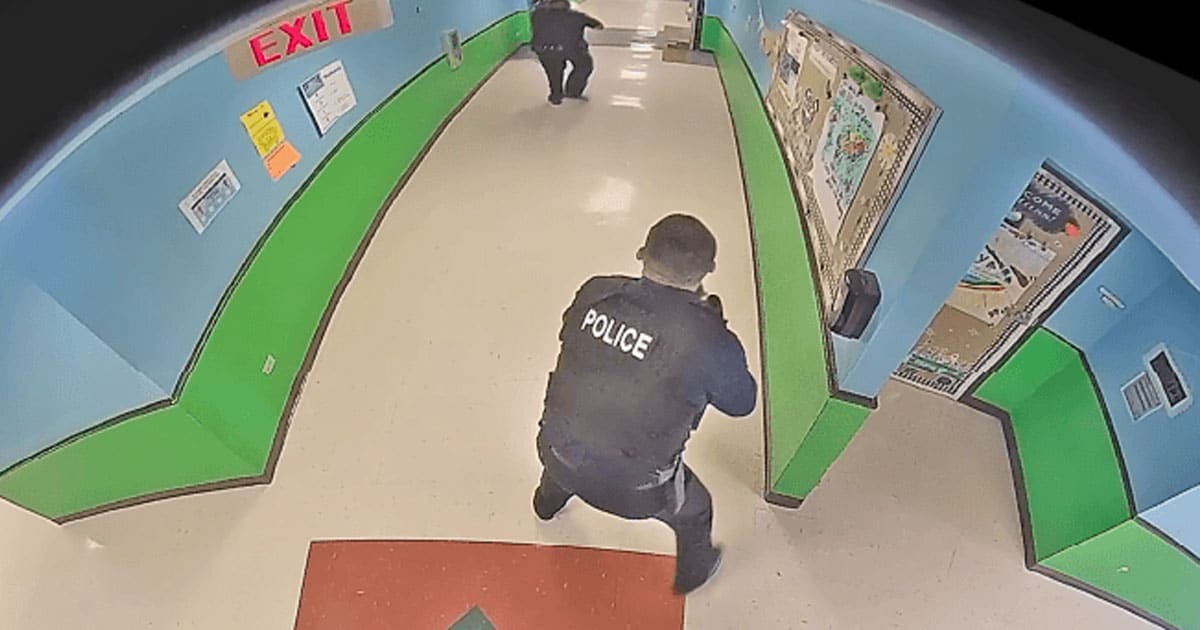
The DOJ released its long-awaited report last week titled, “Critical Incident Review Active Shooter at Robb Elementary School.” It is filled with damning reviews of the myriad of mistakes that cost lives that fateful day.
Attorney General Merrick Garland held a news conference in Uvalde when the nearly 600-page report was released. “Had law enforcement agencies followed generally accepted practices in active shooter situations and gone right after the shooter and stopped him, lives would have been saved and people would have survived,” he declared.
Garland added that the victims “deserved better.”
Investigators determined the scene imploded with a “cascading failure of leadership, decision-making, tactics, policy and training.” And it did not stop there.
There were multiple “breakdowns” in the law enforcement response and a lack of “urgency” leading to an overall “critical failure.”
Despite authorities arriving at the elementary school within three minutes of the original call for help, it was more than an hour later before the killer was put down.
The DOJ report cited an immediate error in not treating the crisis scene as an active shooter situation. Instead, the commanding officer classified the incident as that of a barricaded shooter.
This is despite emergency dispatchers continuing to receive calls from children trapped in the classroom.
The release concluded there was a “great deal of confusion,” though some officers at first responded according to their training. However, they retreated as gunshots rang out and chose to wait for the arrival of SWAT tactical officers.
Investigators concluded that the response should not have been delayed. They noted that since the Columbine tragedy, it is a “fundamental precept” that active shooter situations must be immediately addressed to “neutralize the subject.”
The report added that “everything else, including officer safety, is subordinate to that objective.”
There was a maddening presumption that doors were locked, though they were not checked after additional gunshots rang out. Then there was a 15-minute wait for a sniper, who arrived but could not see into the classroom.
Two officials who no longer have their jobs, Uvalde Acting Police Chief Mariano Pargas and Uvalde school district Police Chief Pete Arrendondo, were initially assailed for perceived incompetence. The DOJ report did nothing to allay blame as both should have been in command of the chaotic scene.
The Texas Tribune reported that many families of victims want these former officials charged, though that decision has not been made.
The report concluded that Pargas was in the “best position to start taking command and control and coordinate with approaching personnel.” That did not develop, and Arrendondo was ultimately at the forefront of the police response. He said several times after the tragedy that he did not know he was in charge.
Command posts were not established to facilitate communications, and these issues were exacerbated when Arrendondo discarded police radios. Many officers upon arrival incorrectly believed the shooter was dead or that Arrendondo was in the classroom.
Pargas did not take the lead as warranted, according to the report. He was told there was a classroom “full of victims” and he then called to see if there were enough emergency responders standing by. The report noted that street closures around the school prevented ambulances from accessing the scene.
Response time was further wasted attempting to get keys to the classroom and evacuate other students from the building.
Other agency heads were also criticized in the report for their failure to effectively question the command decisions made or not made by Pargas and Arrendondo.
